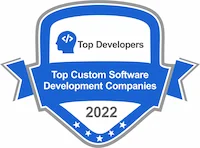Both Fractional CTO and CTO as a Service can provide technological leadership and direction for a company, but they differ in execution, expectations, and the scope of their responsibilities. This article explores the main differences between Fractional CTO and CTO as a Service and how each can benefit different organizations.
What is a Fractional CTO?
The term Fractional CTO refers to a highly experienced professional who provides CTO services on a part-time or fractional basis to a company. They typically work regularly but do not assume a full-time role. This type of CTO engages with the company on a part-time basis, making it particularly beneficial for startups or small businesses that need strategic tech expertise without the costs of a full-time CTO.
A Fractional CTO can integrate into the company’s structure and work directly with other teams to establish technological strategies, make critical decisions, and manage the technical aspects of the organization’s growth.
What is CTO as a Service?
CTO as a Service (CTOaaS) is a model where CTO services are delivered flexibly, often through an external company or consulting platform that assigns a professional or team to handle specific technological tasks. CTOaaS enables businesses to access CTO-level expertise without hiring someone onto their staff or committing long-term.
The structure of CTOaaS can vary depending on the service provider. Some may offer on-demand solutions for specific projects, while others provide ongoing support with less direct involvement compared to a Fractional CTO.
Key differences between Fractional CTO and CTO as a Service
1. Involvement and commitment to the company
- Fractional CTO: this role involves a higher level of involvement and commitment, as the Fractional CTO works within the organizational structure. They often integrate into the company’s culture, deeply understand teams, and actively participate in strategic planning. In some cases, they become a key decision-maker in aligning technology with business goals.
- CTO as a Service: while providing technological expertise, CTOaaS generally focuses on tasks and specific projects. Being an external service, the assigned professional may not deeply engage with the company’s culture or internal dynamics. CTOaaS works best for situations requiring quick responses or immediate solutions without deep organizational integration.
2. Flexibility and scalability of service
- Fractional CTO: this model is less flexible regarding constant changes in responsibilities, as a Fractional CTO usually has a set schedule of hours or days dedicated to the company. This regularity fosters more consistent and strategic technological development. While the hours can be adjusted, this model is less adaptable for short-term projects or highly variable needs.
- CTO as a Service: flexibility is a major advantage of CTOaaS, as this model can adapt to the changing needs of a company. Businesses can use this service for specific projects or short-term contracts, offering higher scalability for companies needing occasional or on-demand technical support.
3. Cost and budget
- Fractional CTO: although more affordable than a full-time CTO, a Fractional CTO involves a regular payment commitment, making it a higher investment compared to CTOaaS. However, startups and small businesses often find this option cost-effective, especially when seeking an expert available consistently with a certain level of commitment.
- CTO as a Service: CTOaaS typically has variable and scalable rates, tailored to the hours and expertise required for each project. This flexibility can be beneficial for companies with budget constraints, allowing them to pay only for specific tasks or projects. This makes CTOaaS attractive for businesses not requiring constant technical oversight.
4. Role duration and continuity
- Fractional CTO: a Fractional CTO generally commits to a long-term role, focusing on strategic projects requiring continuity and ongoing monitoring. This ensures the CTO can handle technology development and planning projects that need consistent decision-making.
- CTO as a Service: the duration of CTOaaS roles is often shorter or limited to the completion of specific tasks or projects. Once the task is completed, the need for CTOaaS may end, limiting continuity if ongoing technological supervision is required.
5. Areas of focus and responsibilities
- Fractional CTO: given their integration within the company, a Fractional CTO covers a broad range of responsibilities, including technological strategy, team supervision, security, and regulatory compliance. They participate in all stages of technological development, from conceptualization to implementation and monitoring.
- CTO as a Service: this model focuses more on problem-solving and executing specific projects. Responsibilities in CTOaaS are often limited to particular tasks, such as security audits, prototyping, or consulting on product development. It is less likely for CTOaaS to take on a holistic role in overseeing the company’s technology.
Which option is best for your company?
Choosing between a Fractional CTO and CTO as a Service largely depends on your company’s needs, structure, and resources. Below are some common scenarios where each model might be ideal:
- Fractional CTO: this role is suitable for startups or small businesses in growth phases that need consistent technological leadership. It is also ideal for companies wanting to integrate technology into their processes strategically and with a long-term focus.
- CTO as a Service: this option is best for companies needing to solve specific problems quickly and efficiently without ongoing commitments. CTOaaS is also a great choice for businesses with occasional needs, such as improving cybersecurity, auditing systems, or developing prototypes.
Both Fractional CTO and CTO as a Service offer innovative solutions for companies seeking technological expertise without hiring a full-time CTO. While a Fractional CTO provides consistent, strategic direction with regular engagement, CTO as a Service is a more flexible option for specific needs or short-term projects.
Evaluating the desired level of integration and continuity within your company is key to choosing the most suitable model. Understanding these differences enables businesses to make informed decisions to optimize their technological strategy and successfully achieve their business goals.










